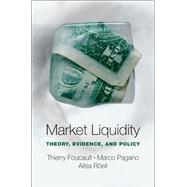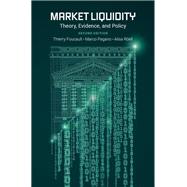Market Liquidity Theory, Evidence, and Policy

Market Liquidity Theory, Evidence, and Policy
- ISBN 13:
9780199936243
- ISBN 10:
0199936242
- Format: Hardcover
- Copyright: 03/25/2013
- Publisher: Oxford University Press
.svg) Rent
From $55.89
Rent
From $55.89
List Price $89.60 Save
| TERM | PRICE | DUE |
|---|---|---|



List Price $89.60 Save $0.90
Usually Ships in 3-5 Business Days
We Buy This Book Back!
Free Shipping On Every Order
Note: Supplemental materials are not guaranteed with Rental or Used book purchases.
Extend or Purchase Your Rental at Any Time
Need to keep your rental past your due date? At any time before your due date you can extend or purchase your rental through your account.
Summary
This book takes these deviations seriously, and explains why and how they emerge in the trading process and are eventually eliminated. The authors draw on a vast body of theoretical insights and empirical findings on security price formation that have accumulated in the last thirty years, and have come to form a well-defined field within financial economics known as 'market microstructure.' Focusing on liquidity and price discovery, they analyze the tension between the two, pointing out that when price-relevant information reaches the market through trading pressure rather than through a public announcement, liquidity suffers.
The book also confronts many puzzling phenomena in securities markets and uses the analytical tools and empirical methods of market microstructure to understand them. These include issues such as why liquidity changes over time, why large trades move prices up or down, and why these price changes are subsequently reversed, why we see concentration of securities trading, why some traders willingly disclose their intended trades while others hide them, and why we observe temporary deviations from arbitrage prices.







